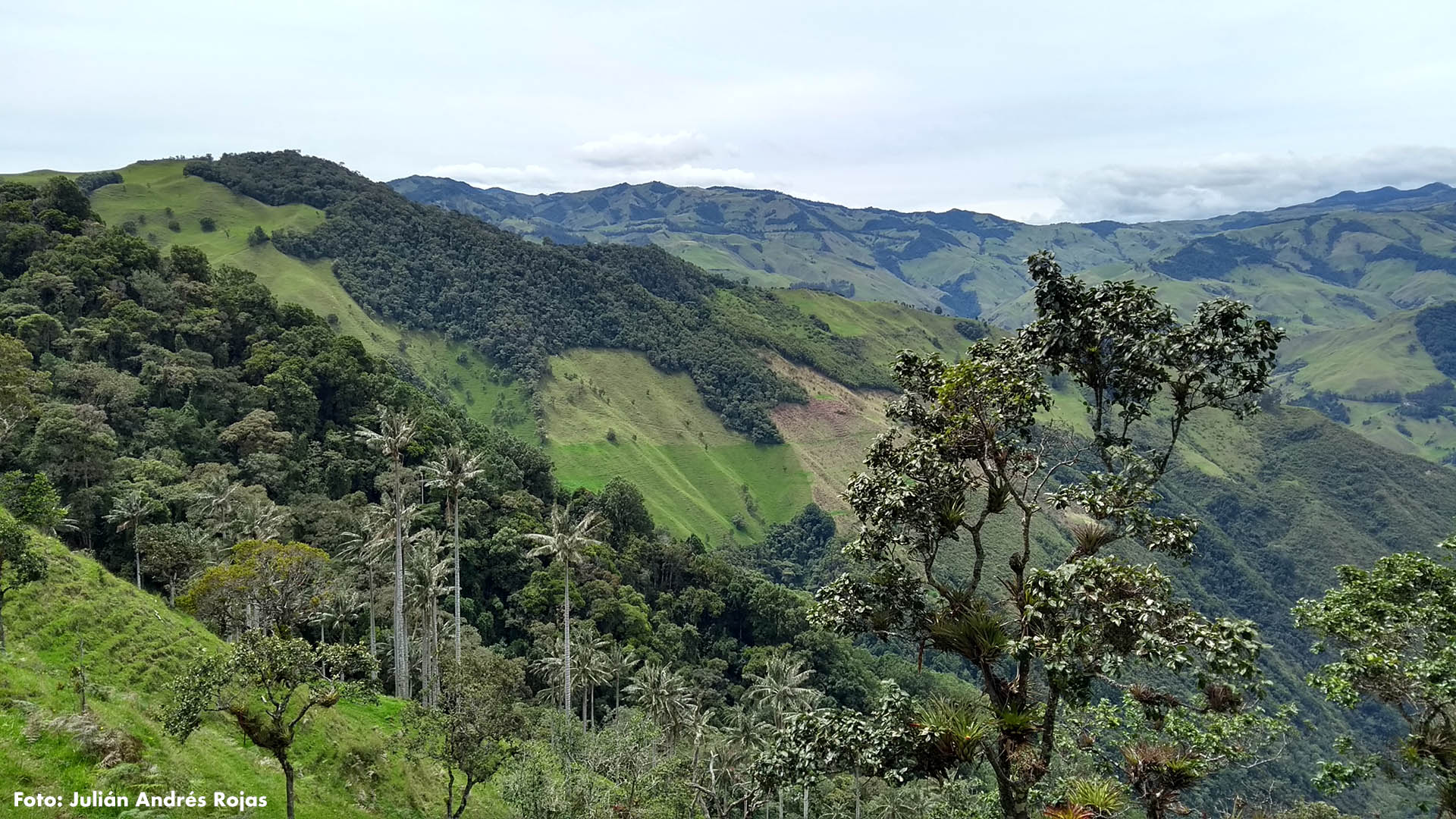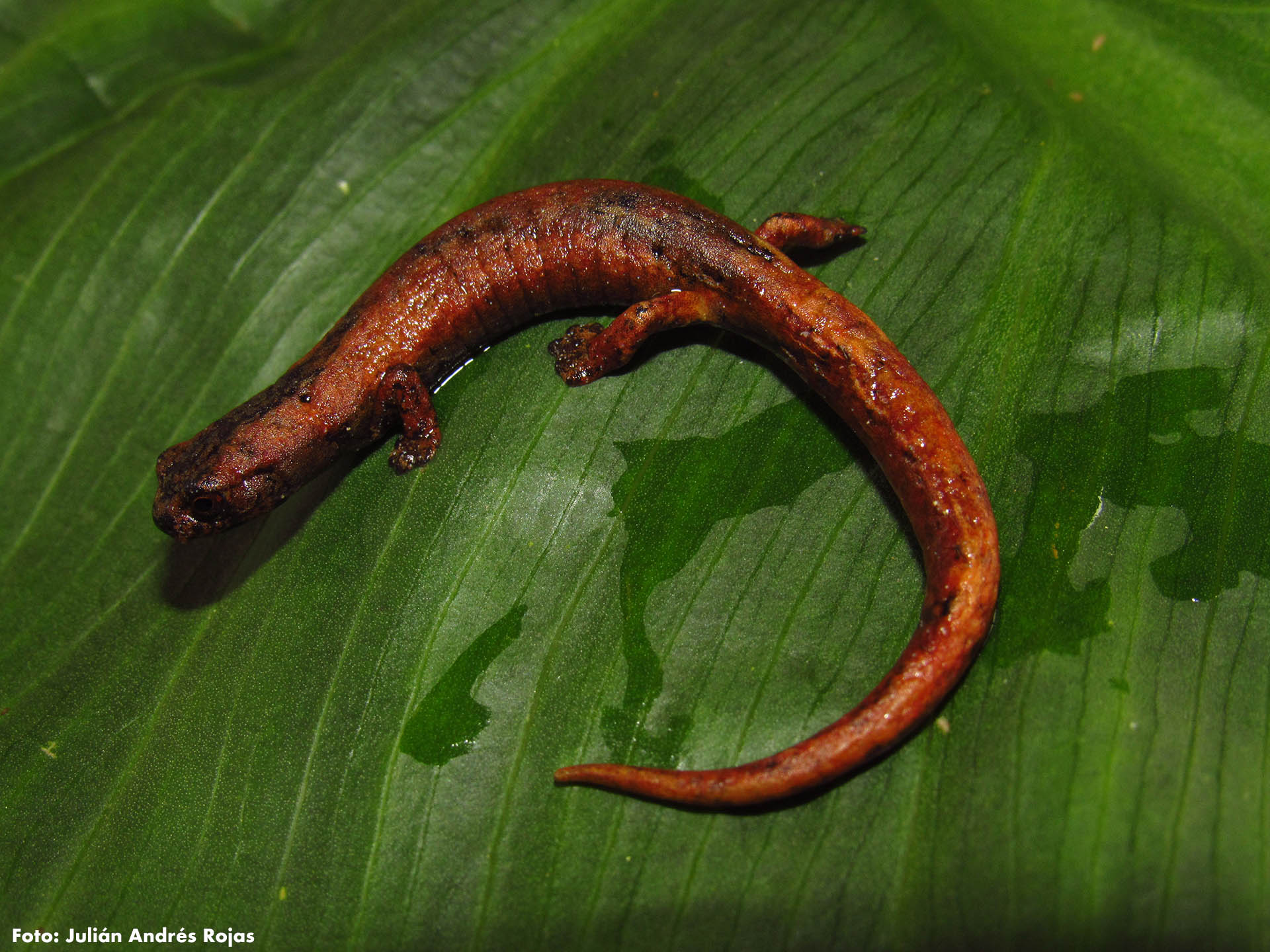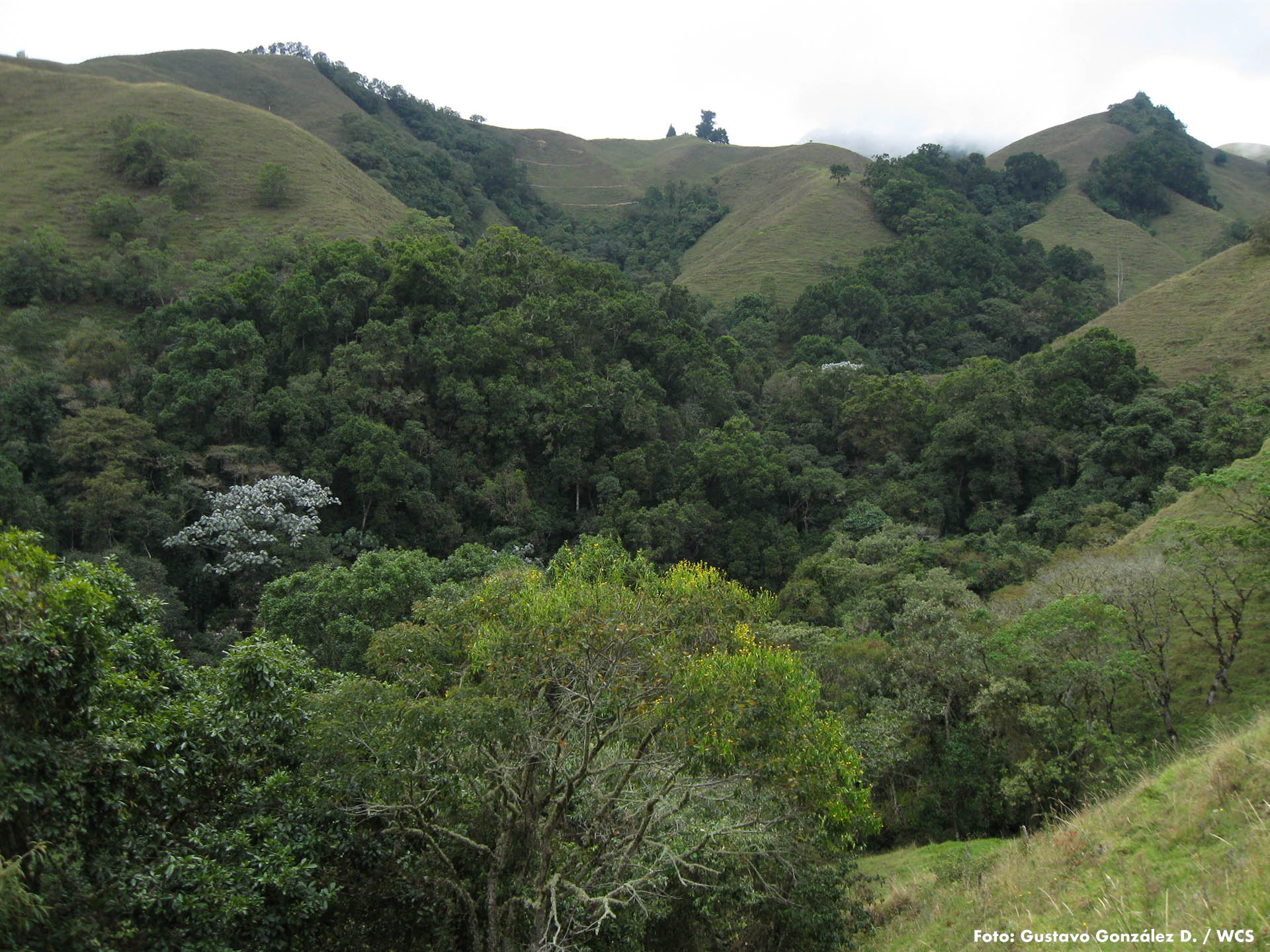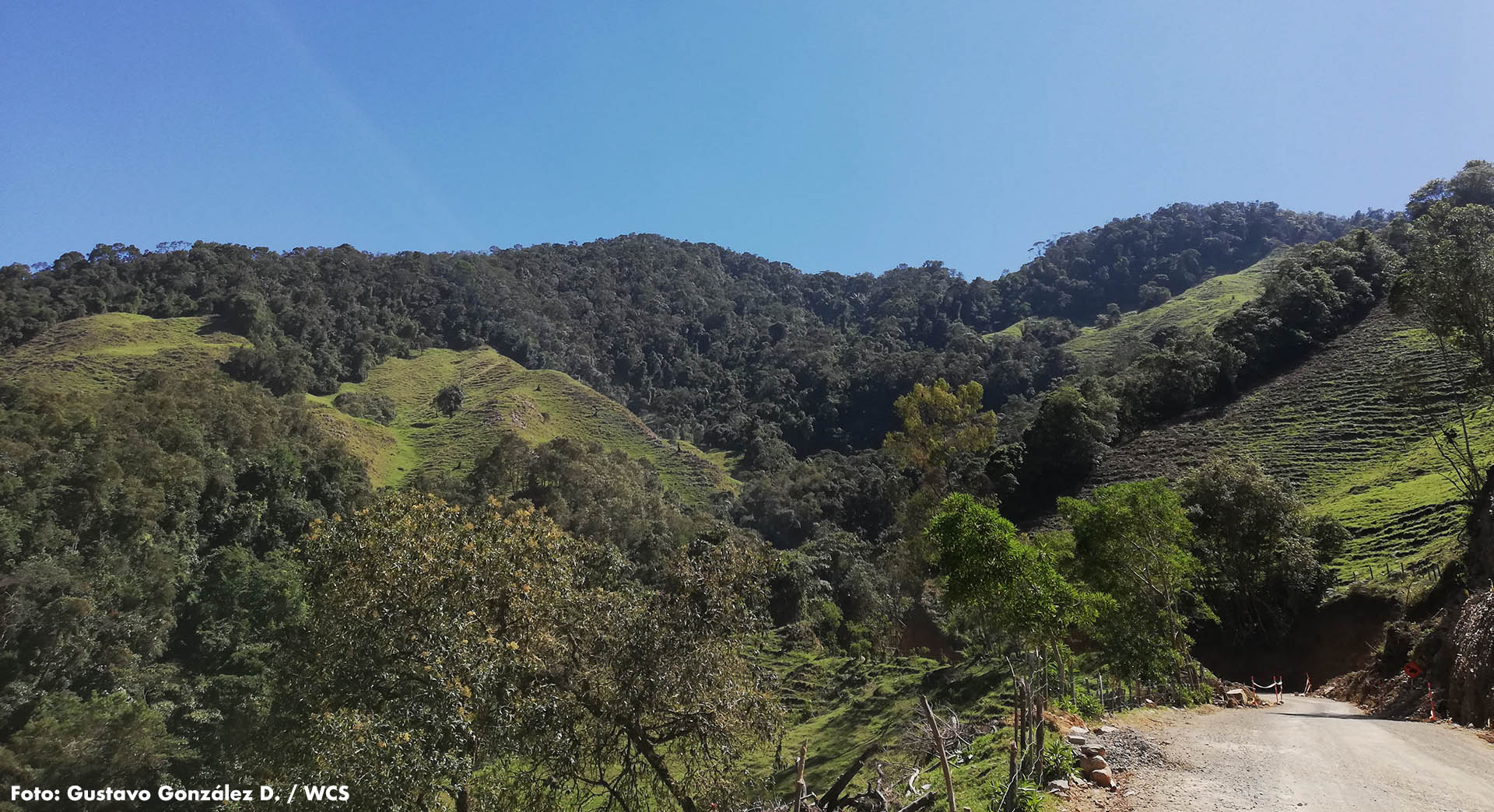This site, home to forests, birds, amphibians and mammals and source of water for several aqueducts in Salamina (Caldas), faces deforestation and agricultural pressure. WCS Colombia included it as a priority area during the identification of the Main Ecological Structure of the Northern Subregion of this department and as part of a contract with the Regional Autonomous Corporation of Caldas (Corpocaldas).

Some years ago, many community members, public entities and environmental organizations started focusing their attention on El Gigante, a region of Andean forests and underbrush, located in Salamina, among the rural settlements of El Cedral, Palosanto and La Quiebra, and have highlighted its ecological value, a transcendental issue for Caldas.
As part of an exercise for the identification of the ‘Ecological Structure of the Northern Subregion’ in Caldas, WCS Colombia also judged this area as fundamental considering, among other aspects, the presence of oaks, a rare species now in Colombia due to overexploitation for the production of charcoal and felling to introduce farming. Moreover, many streams run through this region: El Canelo, La Bella, Monte Loro and Tesalia are some. But the best-known are Chagualito and Boquerón; their waters should be a priority, as they supply urban sectors as well as rural aqueducts.
Furthermore, El Gigante is the habitat of an important number of bird, mammal, reptile and insect species that represent an asset for the region’s biodiversity.
Last September, the Regional Autonomous Corporation of Caldas (Corpocaldas), after a process that began in 2015 and involved months of discussions, declared this region a protected area, under the denomination of Soil Conservation District.
This District covers 729 hectares that represent a big benefit for the region. But, at the same time, they are a challenge, as they must be adequately organized and managed in order to protect and recover all their biological resources, without that being an obstacle for the region´s economic development.
Home to endemic species
As per biological characterizations completed by WCS Colombia, an important diversity of flora and fauna has been accounted for in El Gigante. Without these being final figures, 4 amphibian species, 47 bird species, 5 mammal species and over 40 plant species have been seen.
A rodent scientifically known as Nephelomys childi, endemic to our country, stands out. Likewise, Cryptotis medellinius, a shrew only seen in Colombia and a stingless bee, called Melipona nigrescens, also exclusive of the country.

And some amphibians are also prominent. One of them, according to Gustavo González, WCS Colombia investigator for this group of animals, is a specimen of the genus Bolitoglossa sp. It’s a salamander – they existed before frogs – that could be a new species, collected some years ago. However, the taxonomic study of its description has not yet been published. It is thin, has no lungs and, therefore, breathes through its skin (cutaneous). It has a very long tongue, the size of half its body.
To all the above, we can add an amphibian similar to Pristimantis paisa which, as per recent studies, is an anuran with a distribution restricted to Antioquia. The species reported in El Gigante, therefore, would be new for science.
But in addition to these values that highlight the biological richness of El Gigante and were essential in the attainment of the declaration of protected area, there is another fundamental attraction. Silvia Álvarez, WCS investigator who leads the identification of the Main Ecological Structure of the Northern Subregion, explains that El Gigante is now transformed into a key element, something like the link in a chain in the sequence of a series of protective forest reserves, among which Tarcará and El Diamante stand out, that form 14 core areas and stretch out over the municipalities of Aranzazu, Pácora and Aguadas, neighbors of Salamina.
Crops and more challenges
The richness of the entire region is evident and the creation of El Gigante as a reserve zone also stands out due to its significance. However, it happens in a decisive moment, because the present condition of the natural coverage is not the best.

As many other places of their type in Colombia, the Andean ecosystems that have existed there have suffered an intense human influence for more than 500 years and it is estimated that only 21 percent of the original natural ecosystems remain. This, due to the deforestation that has given way to agricultural crops and stockbreeding.
Additionally, lately, there have been undeniable alterations in the municipality’s hydrological cycles with precipitations below the historical tendency, as registered by the Institute of Hydrology, Meteorology and Environmental Studies. (Ideam). And, although the municipality of Salamina has 22.600 hectares declared as forest reserve, these have been seriously degraded and there are no different intents to include them in the National System of Protected Areas (SINAP).
The declaration as Soil Conservation District does not necessarily restrict productive activities such as, for example, the Hass avocado farming that some businessmen promote in the zone. And it does not seek to eradicate agricultural hectares installed years back either. So “what follows is the definition of the zoning of the region and its rules of use, and consequently the opportunity of accomplishing the preservation objectives. Lastly, what we aim at is for all productive activities developed there to be environmentally sustainable” explained Jony Albeiro Arias Ortegón, from the group of Biodiversity and Ecosystems of Corpocaldas.
The Corporation additionally indicated that a special regulation will prevent the shortage of water for the population and will also restrain water pollution.
In order to preserve primary forests, added the official, agriculture should be established in meadows or lots previously used for extensive stockbreeding or unused pastures. And producers must attend to the protection of water, river basins or microbasins within their property. They must also respect the requirements of Protective Forest Strips, regulated in the municipal Territorial Ordering Plans, and those demanded by environmental authorities.

These properties, additionally, must be georeferenced and be adjusted to an aptitude zoning, as per the Planning Unit of Rural Agriculture and Livestock Farming (UPRA).
WCS Colombia explains that, additionally, as El Gigante is part of Caldas´ Main Ecological Structure, at least 50 percent of the natural conditions of forests and underbrush must be recovered, especially near the microbasins. And a first step towards this achievement will be the protection of 17 per cent of the existing rain forests. It is estimated, furthermore, that a territory of 900 plus hectares bordering the new District deserves special care, because part of its new buffer zone could be there.
The deadline to carry out a management plan, provided that all conservation and sustainable production objectives can be met, will be one year. A gigantic challenge, a crucial test striving for the continuity of El Gigante as the true biodiverse colossus of northern Caldas